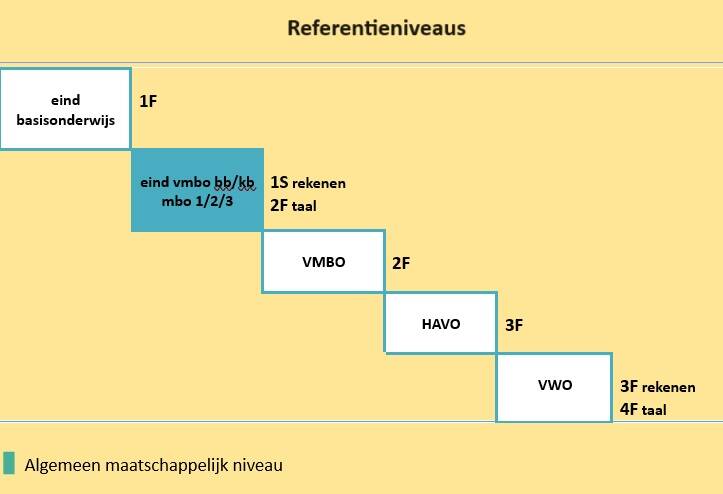Reference levels in education, set by the government, serve as a measure of skill mastery. Together, all reference levels form the reference framework, a continuous learning line extending from primary education to vocational education. This framework facilitates a smooth transition from one educational institution to another and helps recognize student strengths and areas of concern.
More and more teaching methods have aligned their content with these reference levels. Meanwhile, the non-method based tests also test the aspects of the reference framework. From group 6 onwards, the reference levels are mentioned with the results, including those of the transfer test in group 8.
Within the reference levels for primary education we distinguish the fundamental level (1F) and the target levels (1S for arithmetic and 2F for language). The fundamental level is what the majority of pupils should have mastered at least when leaving primary education. The target level is more challenging and suitable for pupils who can handle more.
For further education, the reference levels are required to obtain a diploma. For example, VMBO students must master 2F at the end of their course in order to continue on to MBO. HAVO students must achieve 3F in their final exams, and VWO students must achieve 4F (language) and 3F (arithmetic) in order to continue in higher vocational or academic education.



Add comment
Comments